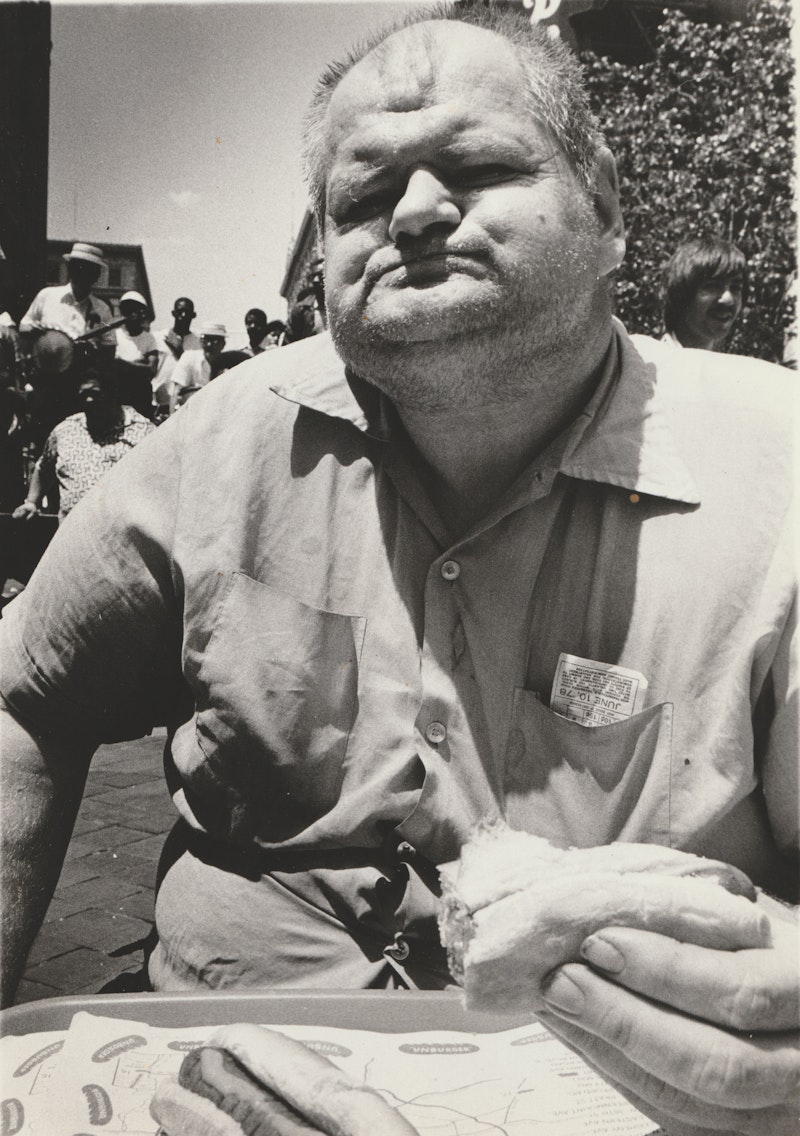Baltimore is, as Shane MacGowan sang, a dirty old town, but it’s a funny old town too. Not funny as rib-tickling, but funny like strange and second-tier cool. That’s not critical, since I’ve lived in the city for two stints: 1973 (from Long Island for college) to 1987, when I moved to Manhattan; and 2003-present. In 1976, for example, I took a semester off from Johns Hopkins to work in Denver, where I’d walk down Colfax Ave. with the Rocky Mountains circling me. When friends wrote letters and asked what I missed about Baltimore the answer was always the same: filthy streets, the humidity and a wacky circus of humanity that, at least then, wasn’t present in Denver.
I also liked the twin sides of those in my circle—my work was journalism, which was de facto “art scene”—one was charming self-deprecation, the other the chips on their shoulders (especially those born here) the size of 99 Berger’s cookies (so completely overrated) piled high. At one time, around 1981-1984, well-known poet Andrei Codrescu lived here, was a guru/mentor to younger poets, and in a City Paper column he proclaimed that Baltimore was becoming what San Francisco was in the late-1950s. Ridiculous, or if you choose, fanciful, but earnest/out-their-heads young men and women in their 20s bought in, and there was a mini-movement that was celebrated, and toasted, in places like Louie’s Café and Second Story Books in Mt. Vernon, and any number of bars in Fells Point. (Andrei, with his Romanian accent, could be a prankster. At a party in 1982, he passed me a bottle of Natty Boh and said, “You must be in the money with City Paper. Raise?” The paper was in debt, and I responded: “Right, look at my rag-tag clothes.” Deadpan, Andrei said: “You don’t fool me. That’s eccentricity!”)
I bring this up because last week I received the slim, but packed, volume Baltimorology produced, edited and compiled by Tom DiVenti and Dick Turner—both Splice Today contributors—and it’s a wonderful read not only for residents but those who have an interest in urban living in the latter part of the 20th century. On page 57, there’s a picture of a Polock Johnny’s—at one time a successful franchise around the city—on an unnamed street, with the simple caption, “Baltimore Health Food Restaurant.” These were delicious (at least going down) subs, with a fat sausage smothered in onions, peppers, lots of grease, and if you were John Kerry, a slice of Swiss cheese. Slid down my throat. I’d turn cartwheels for one of those one-minute morsels right now, but would be down for the count for a day, as if I emptied a bottle of Pikesville Rye.
The photo above was taken Jennifer Bishop for a City Paper article I was writing in the early days of the paper: a chomp-and-swallow-till-you-puke contest of who could eat the most sausages. The fellow in the picture, at Charles Plaza, who looks as though this was a daily activity for him, won the match, picked up his prize (I’ve no recollection of what it was) and then waddled over to a bus stop, his work done for the day. Clues below for what year this pic was taken.
There are a number of vignettes in Baltimorology that I particularly liked. Rick Peabody, who ran Gargoyle magazine—and a splendid writer—recalls an unannounced 1970s visit at the Johns Hopkins office of novelist John Barth, who was teaching fiction there at the time. Rick didn’t see the “Do Not Knock” sign on the professor’s door, but through a circuitous process spoke to him, and he revealed that Giles Goat Boy was his favorite novel that he wrote. “I guess he liked my naïve passion,” Rick recalls.
Tom DiVenti writes about Johnny Unitas’ restaurant The Golden Arm. “I often went to the Golden Arm with my drinking buddies for the freebies and cheap beer. There was always a crazy side show at the bar with local celebrities [including sports announcer Charlie Eckman, Art Donovan and Brooks Robinson].” Brooks was also in the restaurant business, as a partner (hands-off) in Waverly’s The Gorsuch House that was noted for its sports memorabilia. It hit hard times in the early-1980s and became a short-lived gay bar called The Port Hole. We ran a story about it, including photos on the wall that, as was once said, in the spirit of “barnyard epithet,” “left little to the imagination.” It was an accurate and good story, though it didn’t sit well with several advertisers, and I remember a young sales rep, a devout Christian, working up the courage to enter my office and complain. I tried to slough it off, saying, “That’s what we do, Bob,” but he wasn’t pleased. I felt bad for the fellow, just trying to earn a buck, but we tried to stay true to the “church and state” policy applied to editorial content and advertising.
I also liked a story by Earl Crown about difference between watching an Orioles game at Memorial Stadium and Camden Yards (he preferred the former), poems by Paul Bartlett and Terrence Winch’s remembrance of Fells Point’s Cat’s Eye Pub.
Look at the clues to figure out the year: Roman Polanski skips bail and flees to France; Paul Banks is born and Gig Young dies; the primetime soap Dallas premiers on CBS; Angels outfielder Lyman Bostock is shot to death in Gary, Indiana on a road trip to Chicago; Vietnam invades Cambodia; Dianne Feinstein becomes the first female mayor of San Francisco; Bill Hader is born and John Cazale dies; Rainer Werner Fassbinder films The Marriage of Maria Braun, In a Year with 13 Moons, The Third Generation, and premieres Despair at Cannes; Cleveland is the first city to default since the Depression; and Randy Newman’s “Short People” is #41 on Billboard’s year-end list.
—Follow Russ Smith on Twitter: @MUGGER2023

